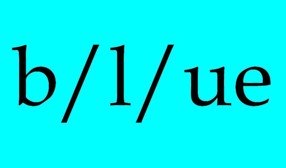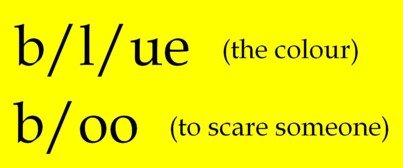Phonics Help:
The Phonic Alphabetic Code Chart
Phonics help can be an intrinsic intervention strategy for beating dyslexia.
Watch this video as an alternative to reading the page.
CLICK HERE FOR THE PHONIC ALPHABETIC CODE CHART
The phonic alphabetic code chart is such an important tool for literacy development. It was created by the wonderful people at Phonics International.
This chart shows you which sounds go with which combinations of letters. Every person dyslexic or not should have a copy of this chart.
What is the phonic alphabetic code chart?
As you know, there are 26 letters in the alphabet. However the English language is made up of 44 sounds (speech sounds called phonemes). When we break a word down into its smallest units of sound these are its phonemes. For example the word ‘blue’ can be broken down into three sounds (see graphic).

With this simple example you have a four letter word with three sounds (phonemes).
The same example is also made up of three graphemes. The graphemes are the letters used to represent each sound. They can be a single letter or a combination of letters. Click here for Phonic Spelling Help.
In the English language there is usually several ways of writing each sound. To give you an example let’s compare (see graphic):

With these two words you can hear they have the same sound (phoneme) at the end of both words. However it is written
in two different ways (graphemes).
This is what the phonic alphabetic code chart is all about. There are only 150, or so, graphemes used to represent the 44 sounds in the English language. Using the 150 graphemes you can spell any word. Click here for The Truth about How to Spell.
Recommendations:
How to use it:
Each line of the chart shows you the different ways to write a single sound. The most common way of writing each sound is on the far left of the line. They become less common as you move right.
Phonics help:
CLICK HERE FOR THE PHONIC ALPHABETIC CODE CHART
The problem with English:
The problem is there is almost always several different ways to write each sound. Once you start using the code chart you will realise there is no sound you can't match up to the letters. Click here for Why I Hate the English Language.
Conclusion:
The phonic chart gives you the foundations to spell sound by sound. You will realize that the language is simply sounds represented by letters or combinations of letters.
Treat it like you are learning the basics again, going right back to the start. Click here for more treatments and interventions.
Return from Phonics Help to Home Page.
